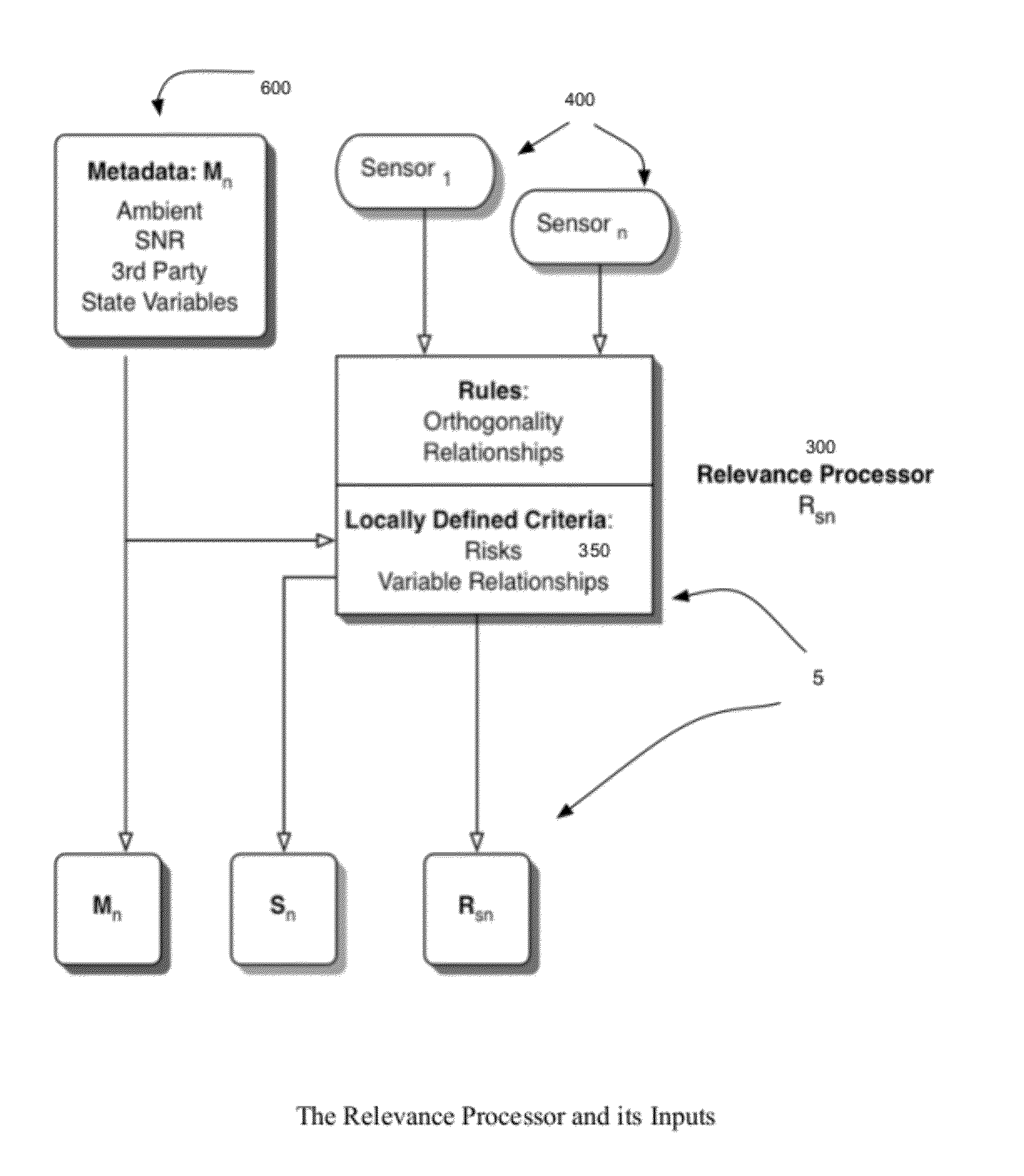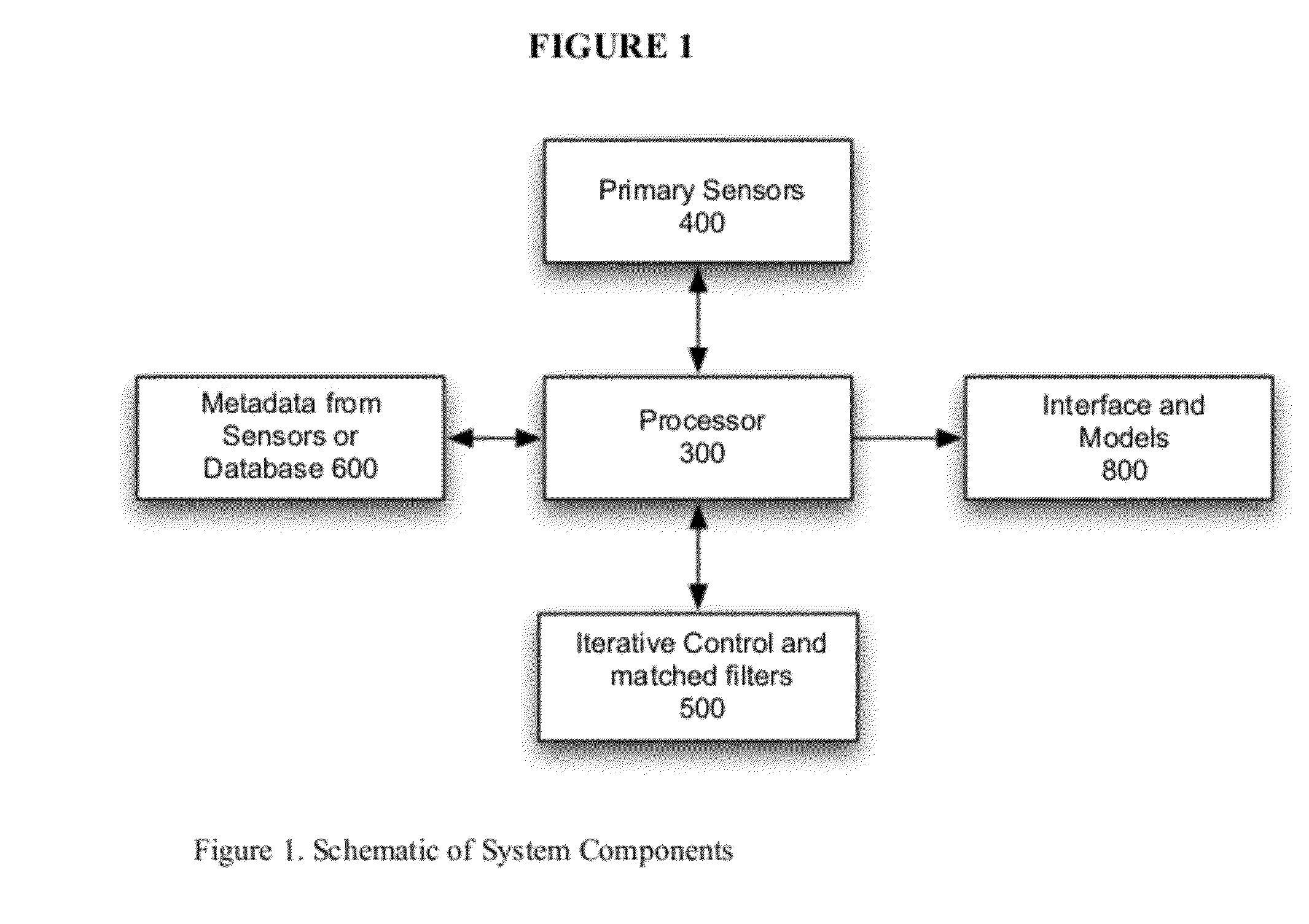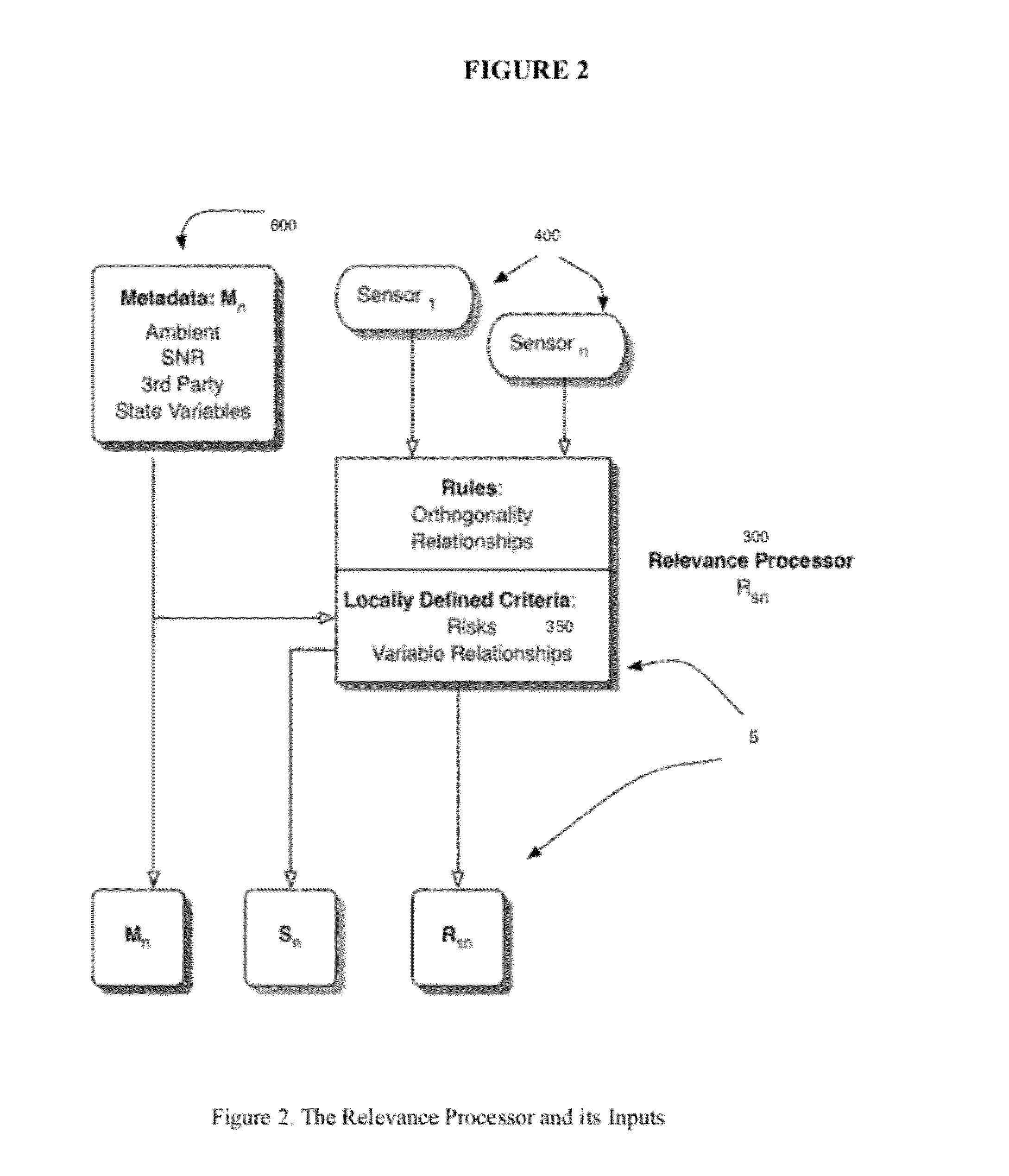Decision Management System to Define, Validate and Extract Data for Predictive Models
a technology of predictive models and decision management, applied in the field of decision management, can solve problems such as people's inability to ignore them altogether, time-consuming system training, and doubts about system reliability
- Summary
- Abstract
- Description
- Claims
- Application Information
AI Technical Summary
Benefits of technology
Problems solved by technology
Method used
Image
Examples
example 1
[0089]A System for monitoring protein changes in fluid is described that uses multiple sensors throughout a controlled experimental system. The protein sensor might be a system for spectroscopic analysis, and the ambient metadata sensors would consist of measurements for temperature, vibration, humidity and flow. Changes to the system could include the inclusion of biomarkers and reagents that would interact with the target protein. After a deployment period there would be an apparent pattern between the ambient conditions such as temperature and humidity and the spectral analysis. Variations in flow or vibration would not have similar correlations. A set of rules would establish the normal relationships and the probability of changes being relevant to changes in the target proteins.
example 2
[0090]A monitoring system for contamination of fluids, especially air or water is described that uses a combination of filters and post analysis where the chemical or biological matter on a filter surface is compared to the probability of such filter conditions. Metadata can be created from analysis of the filter surface and from prior knowledge of the filter sampling conditions such as prior laboratory tests. The expert system can extrapolate the probability of certain conditions where chemical or biological markers of change can act as surrogate indicators. Other metadata sensors such as optical scatter can be used to verify well measurement parameters.
example 3
[0091]An analysis system to evaluate apriori collected data to analyze chemical and biological drug interactions in a controlled environment where the data has been collected in a conventional manner, but has not been evaluated for probabilities that suggest a positive outcome in terms of probability. In the preferred embodiment, the adaptive changes of the algorithm would serve as one of the inputs to the predictive nature of the output, providing searchable metadata, such as results of event correlation as another method of noise reduction.
PUM
 Login to View More
Login to View More Abstract
Description
Claims
Application Information
 Login to View More
Login to View More - R&D
- Intellectual Property
- Life Sciences
- Materials
- Tech Scout
- Unparalleled Data Quality
- Higher Quality Content
- 60% Fewer Hallucinations
Browse by: Latest US Patents, China's latest patents, Technical Efficacy Thesaurus, Application Domain, Technology Topic, Popular Technical Reports.
© 2025 PatSnap. All rights reserved.Legal|Privacy policy|Modern Slavery Act Transparency Statement|Sitemap|About US| Contact US: help@patsnap.com



